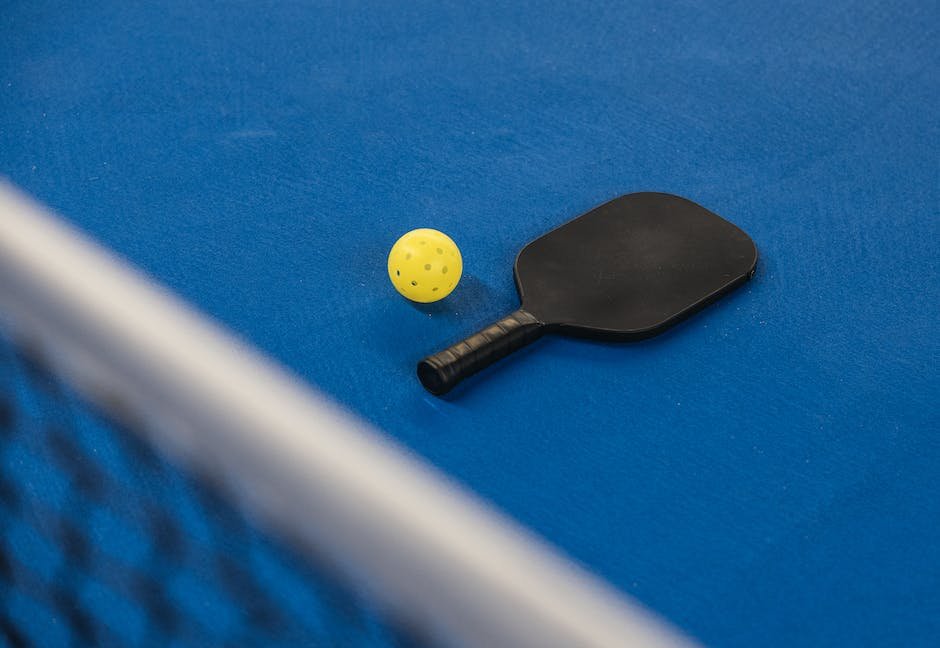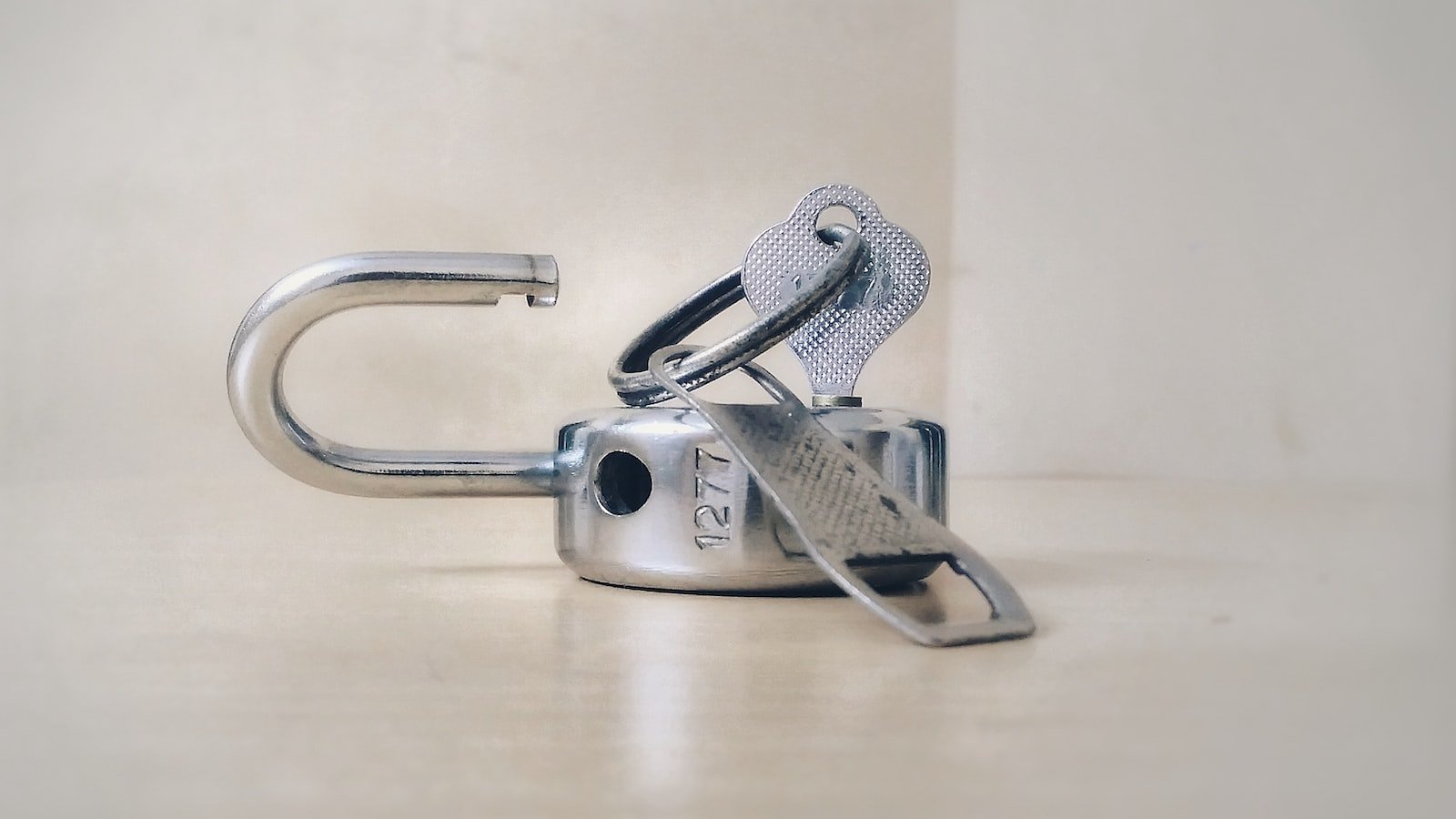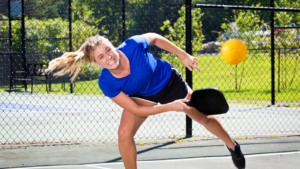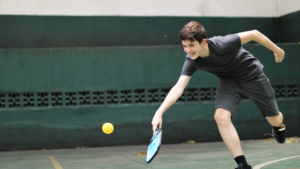Have you ever wondered if there is a way to infuse the beauty and precision of geometry into the exhilarating sport of pickleball? Prepare to be amazed as we explore the fascinating realm where geometry meets pickleball, unraveling the secrets behind mastering court angles. As players strive for the elusive perfect shot, the understanding and utilization of angles become paramount in achieving success on the court. In this article, we delve into the compelling relationship between geometry and pickleball, uncovering the hidden gems that can give you the upper hand in your next match. Brace yourself for a mind-bending journey where numbers, lines, and angles converge with fierce competition and unyielding strategy.
Table of Contents
- The Art of Geometry in Pickleball: Understanding Court Angles
- Unlocking the Power of Angles: A Strategic Approach to Pickleball
- Mastering Court Positioning: Achieving Optimal Angles in Pickleball
- Pro Tips for Perfect Angles: Enhancing Shot Selection in Pickleball
- The Geometry of Success: Using Court Angles to Outwit Your Opponents
- Q&A
- In Summary

The Art of Geometry in Pickleball: Understanding Court Angles
Unlock the secrets of geometry and enhance your pickleball game with a deep understanding of court angles. As the saying goes, “Angles are the language of the court,” and indeed, mastering them can give you a significant advantage on the pickleball court.
Geometry comes alive in pickleball when you realize that the court is not just a flat surface. It is a realm filled with infinite possibilities for strategic shot placement and efficient movement. By strategically positioning yourself and manipulating angles, you can outmaneuver your opponents and create winning opportunities.
Here are some key insights to help you grasp the art of geometry in pickleball:
- Approach angles: When approaching the net, aim to hit your shots at acute angles that force your opponents further away from the net. By doing so, you reduce their chances of returning the ball with a strong offensive shot.
- Targeting corners: The corners of the court offer prime real estate for winners. By directing your shots towards these corners, you place your opponents in a difficult position, forcing them to cover more ground and increasing the likelihood of errors.
- Simple geometry: Remember the basics of geometry to improve your court coverage. For example, cutting off the angle means positioning yourself closer to the anticipated trajectory of the ball, reducing the distance you need to cover and giving you a better chance of returning the shot efficiently.
Developing a keen sense of geometry in pickleball not only enhances your game but also adds an element of artistry to your play. As you master the art of angles, the court becomes your canvas, and every shot becomes a brushstroke that paints a winning masterpiece.

Unlocking the Power of Angles: A Strategic Approach to Pickleball
In the exhilarating game of pickleball, understanding the power of angles can be a game-changer. Whether you’re a novice or an experienced player, adopting a strategic approach based on the angles of the court can give you a competitive edge. By mastering the art of shot placement and utilizing the entire court, you can keep your opponents on their toes and dictate the flow of the game.
One key aspect of unlocking the power of angles is recognizing the importance of positioning. By adjusting your stance and placement on the court, you can create advantageous angles for your shots. Stay light on your feet and be ready to move quickly to get into the optimal position.
Another crucial element to consider is shot selection. Take advantage of the different angles available to you. Aim for corners and sidelines to exploit your opponent’s weaknesses and force them into difficult returns. By using angles effectively, you can put pressure on your opponent and open up opportunities to win points.
- Keep the ball low: Aiming for a lower trajectory will increase the likelihood of hitting the ball at an angle that is harder to return.
- Use cross-court shots: By hitting diagonally across the court, you can create wider angles, making it harder for your opponents to reach the ball.
- Mix up your shots: Varying your shot selection will keep your opponents guessing and prevent them from anticipating your next move. Alternate between powerful drives, delicate dinks, and well-timed lobs, utilizing different angles for each shot to keep your opponent off balance.
Unlocking the power of angles in pickleball is about being strategic, observant, and adaptable. It requires a combination of skill, agility, and mental acuity. So, next time you step onto the court, remember that angles are your secret weapon, waiting to be unleashed. Embrace the art of shot placement and witness the transformation in your pickleball game.
Mastering Court Positioning: Achieving Optimal Angles in Pickleball
In the fast-paced and exhilarating game of pickleball, court positioning is a crucial element that can make or break your performance. Mastering the art of achieving optimal angles on the court will not only enhance your gameplay but also give you a competitive edge.
To achieve optimal angles in pickleball, keep these key strategies in mind:
1. **Stay in the “Ready” Stance**: It all starts with a solid foundation. Position yourself in the center of the court, slightly forward, with your knees slightly bent, and your paddle held low and ready to react. This stance ensures quick movement and improved reaction time, allowing you to reach those challenging shots with greater ease.
2. **Maintain a Balanced Footwork**: As the game progresses, constantly adjust your position on the court to maintain balance and access the optimal angle for each shot. Utilize small shuffle steps, rather than large strides, to quickly navigate the court without compromising your stability. This swift footwork will allow you to reach any corner of the court efficiently.
3. **Read the Play and Anticipate**: Achieving optimal angles isn’t just about physical movement; it also depends on your ability to read the game and anticipate your opponents’ shots. By focusing on your opponents’ body movements, paddle positioning, and the speed of the ball, you can predict the most probable direction of the shot and adjust your positioning accordingly.
Remember, mastering court positioning is an ongoing process that requires practice and adaptability. By refining your angles and staying one step ahead, you’ll find yourself dominating the pickleball court with finesse and precision.
Pro Tips for Perfect Angles: Enhancing Shot Selection in Pickleball
Understanding Shot Selection in Pickleball
In the exciting game of pickleball, mastering shot selection is the key to gaining an edge over your opponents. By strategically choosing the right angles for your shots, you can dominate the court and keep your opponents on their toes. Here are some pro tips to help you enhance your shot selection and take your pickleball game to new heights:
- Assess the court: Before every shot, take a moment to analyze the court. Consider factors such as the position of your opponents, the location of the net, and the trajectory of the ball. Visualize the possible angles and envision how your shot will disrupt your opponents’ positioning.
- Angles for deception: Utilizing angles to deceive your opponents can be a game-changer. Instead of always aiming straight at your opponent, surprise them with shots that bounce off the sideline, catching them off guard. This strategic use of angles will force them to adjust their positioning and give you an opportunity to gain control.
- Target the weak zones: Every player has weak zones on the court that can be exploited. Identify these areas by observing your opponents’ movements and anticipate their patterns. Aim your shots towards their weaker side, forcing them into uncomfortable positions and buying yourself more time to react and take control of the game.
Remember, achieving perfect angles in pickleball requires practice and intuition. By incorporating these pro tips into your gameplay, you’ll have an advantage over your opponents and be well on your way to becoming a master of shot selection. So get out on the court, experiment with different angles, and enjoy the exhilaration of hitting those perfectly placed shots. Good luck!
The Geometry of Success: Using Court Angles to Outwit Your Opponents
Enhance your strategic game with the power of court angles!
Mastering the art of court angles can be the key to outsmarting your opponents and gaining a competitive edge on the tennis court. Understanding the geometry of success is essential for players of all levels, from beginners to seasoned professionals. By strategically positioning yourself and utilizing the angles of the court, you can maximize your shot selection, control the flow of the game, and ultimately achieve victory.
Here are some invaluable tips to incorporate the geometry of success into your game:
- 1. Rule the baseline: Position yourself close to the baseline to cover more court and increase your ability to hit aggressive shots. By staying closer to the baseline, you’ll have a wider range of angles and can put your opponents on the defensive.
- 2. Utilize cross-court shots: When given the opportunity, aim for cross-court shots rather than hitting directly down the line. Cross-court shots force your opponents to cover a greater distance, creating a wider angle for your next shot and increasing the likelihood of a successful attack.
- 3. Find the open space: Take advantage of vacant areas on the court. Identify weak spots in your opponents’ positioning and exploit them by directing shots to the open spaces. By using angles effectively, you can make it difficult for your opponents to reach the ball, putting them at a disadvantage.
Unlock the true potential of your game by incorporating the geometry of success into your strategy. By understanding and utilizing court angles, you can gain a superior advantage over your opponents and pave your way to triumph!
Q&A
What is pickleball?
Pickleball is a popular paddle sport that combines elements of tennis, badminton, and ping pong. It is played on a court with a net and involves hitting a perforated plastic ball over the net using paddles.
How does geometry come into play in pickleball?
Geometry plays a crucial role in pickleball as players must understand the different angles on the court to make strategic shots. By utilizing the principles of geometry, players can position themselves accurately, anticipate their opponent’s shot, and make precise shots themselves.
Why are court angles important in pickleball?
Court angles are essential in pickleball, as they determine the trajectory and placement of the ball. Mastering court angles helps players hit shots that are difficult for opponents to return, allows for efficient movement on the court, and opens up opportunities for strategic play.
How can understanding court angles improve your pickleball game?
By understanding court angles, players can anticipate where the ball will go after hitting certain spots. This knowledge enables them to position themselves effectively, making it easier to reach the ball and respond with accurate shots. Understanding court angles improves shot placement, control, and overall game strategy.
Which court angles should players focus on?
There are several critical court angles that players should focus on in pickleball. These include the sideline angles, mid-court angles, and the kitchen line angle. By familiarizing themselves with these angles, players can better control the ball’s direction and make it challenging for their opponents to return the shots.
How can players practice and master court angles in pickleball?
Players can practice court angles by setting up drills that involve hitting shots at specific angles. They can also study and observe professional pickleball players to develop an understanding of how angles impact the game. Regular practice and experimentation on the court are key to mastering court angles in pickleball.
Are there any specific strategies that revolve around court angles in pickleball?
Absolutely, court angles play a role in various pickleball strategies. For example, players can intentionally hit shots towards the sidelines to force their opponents wide and create open spaces in the middle of the court. Additionally, players can use diagonal shots to exploit gaps in their opponent’s coverage and gain a strategic advantage.
In Summary
As we conclude our exploration of the fascinating intersection between geometry and pickleball, one cannot help but be in awe of the intricate dance that unfolds on the court. From the symphony of strategic angles to the artful manipulation of space, this game seamlessly marries mathematics with athleticism.
We have delved into the world of acute angles, obtuse angles, and everything in between, unlocking the secrets they hold within the realm of pickleball. Through this unique lens, we have unearthed the true essence of court geometry, revealing how it can elevate one’s game and revolutionize the way we perceive the sport.
By understanding the implications of geometric concepts such as angles of incidence and reflection, players can strategically position themselves to gain a competitive edge. The utilization of this knowledge empowers them to anticipate their opponent’s shots, intercept with precision, and execute shots that defy gravity.
The proficiency in working the angles of a pickleball court is reminiscent of a skilled painter wielding a brush, effortlessly creating a masterpiece on canvas. Each shot becomes a stroke of poetry, delicately calculated to confound opponents and leave them marveling at the wizardry of the game.
Whether you’re a pickleball enthusiast looking to enhance your skills or a curious reader venturing into the realm of geometry, this fusion of disciplines is a testament to the beauty of human ingenuity. It showcases our innate ability to discern patterns, embrace logic, and create harmony where one may least expect it.
So, next time you step onto the pickleball court, take a moment to appreciate the subtle symphony of angles unfolding before you. Embrace the interplay of geometry and motion, and in doing so, discover a newfound mastery in the ever-evolving game of pickleball. Let the court become your canvas, and let the angles guide your hand.
As an affiliate, my content may feature links to products I personally use and recommend. By taking action, like subscribing or making a purchase, you’ll be supporting my work and fueling my taco cravings at the same time. Win-win, right?
Want to read more? Check out our Affiliate Disclosure page.




